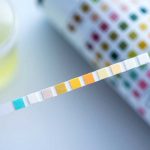Opana is the brand name for an opioid analgesic (painkiller) called oxymorphone. It can treat both acute and chronic pain by attaching to opioid receptors throughout the body.
Like many other prescription drugs, Opana often appears on the black market, where its street price varies.
Opana Street Value & Cost
In general, Opana sells on the street for about $2 per milligram. Standard Opana doses and their prices include:
- 5mg ($10)
- 7.5mg ($15)
- 10mg ($20)
- 15mg ($30)
- 20mg ($40)
- 30mg ($60)
- 40mg ($80)
These prices may be lower in big cities and higher in rural areas. That’s because cities likely have a higher supply of street drugs, and higher supply leads to lower prices.
The Street Value Of Opana Vs. Other Prescription Opioids
Opana costs more than most other prescription opioids sold on the street, including:
- hydrocodone (often sold under the brand names Norco, Vicodin, or Zohydro ER), which costs about $1 per milligram
- methadone (Methadose or Dolophine), which costs about $1 per milligram
- oxycodone (OxyContin or Percocet), which costs about 85 cents per milligram
- morphine (Kadian or Roxanol), which costs about 70 cents per milligram
- tramadol (Ultram or Conzip), which costs about 10 cents per milligram
Other prescription opioids cost the same as or more than Opana. For instance, buprenorphine (Bunavil or Suboxone) costs about $2 per milligram, while hydromorphone (Dilaudid or Exalgo ER) costs about $5 per milligram.
Dangers Of Buying Opana On The Street
When you buy Opana on the street, you face a variety of health risks.
First, some drug dealers sell the extended-release formulation of Opana, also called Opana ER. This formulation was discontinued in 2017 because many people started injecting it and experiencing HIV, hepatitis C, and a severe blood disorder called thrombotic microangiopathy.
A dealer might claim they’re selling the drug’s standard formulation but actually give you Opana ER.
Fentanyl-Laced Opana
Other dealers secretly lace Opana with fentanyl. Fentanyl is a powerful opioid that’s up to 50 times stronger than heroin and up to 100 times stronger than morphine. It poses an extremely high risk of fatal overdose. Common symptoms of a fentanyl overdose include:
- slow or troubled breathing
- cold, clammy, or bluish skin
- bluish lips or fingernails
- smaller pupils
- choking or gurgling sounds
- loss of consciousness
If you or someone you know experiences these symptoms, call 911 right away. Also, administer naloxone if you have it. Naloxone (brand name Narcan) is a medication that quickly reverses the effects of an opioid overdose.
Opana Abuse & Addiction
Whether you get it on the street or from a doctor, Opana is dangerous when abused. Opana abuse occurs when you use the drug in a manner not prescribed by a doctor. For instance, you might take higher doses than prescribed, take it without a prescription, or crush the pills and snort them.
As with other types of opioid abuse, Opana abuse poses a high risk of overdose. An Opana overdose causes the same symptoms as a fentanyl overdose, including trouble breathing, cold skin, and loss of consciousness. It requires immediate medical attention.
Opana abuse can also lead to addiction. Addiction is a serious disease that makes you feel unable to stop using a drug. Other symptoms may include:
- mood swings
- loss of interest in relationships with friends and family
- loss of interest in activities previously enjoyed
- trouble concentrating at work or school
- doctor shopping (visiting multiple doctors to get multiple prescriptions of a drug)
Opioid Addiction Treatment
If you or someone you love experiences these symptoms, seek help at a drug abuse treatment program. Available on an inpatient or outpatient basis, these programs offer services such as:
- medical detox, in which doctors help you slowly and safely stop using Opana with minimal withdrawal symptoms
- mental health counseling, in which a therapist helps you change unhealthy attitudes and behaviors that contributed to your Opana abuse
- family therapy, in which a therapist helps you and your loved ones resolve conflicts and support your recovery
- medication-assisted treatment, in which doctors prescribe FDA-approved medications to ease opioid cravings and withdrawal symptoms
- support groups, in which you can connect with other people recovering from opioid addiction
To learn more about substance abuse treatment options, please contact Northeast Addictions Treatment Center. We provide outpatient evidence-based services to help you or your loved one achieve long-term recovery.
Sources
- Centers for Disease Control and Prevention — Fentanyl Facts
- United States Association for the Study of Pain — Street prices of prescription opioids diverted to the illicit market: data from a national surveillance program
- United States Drug Enforcement Administration — OXYMORPHONE
- United States Food and Drug Administration — FDA requests removal of Opana ER for risks related to abuse
- United States National Library of Medicine — Oxymorphone
Written by
Northeast Addition Editorial Team
©2024 Northeast Addition Center | All Rights Reserved
This page does not provide medical advice.


